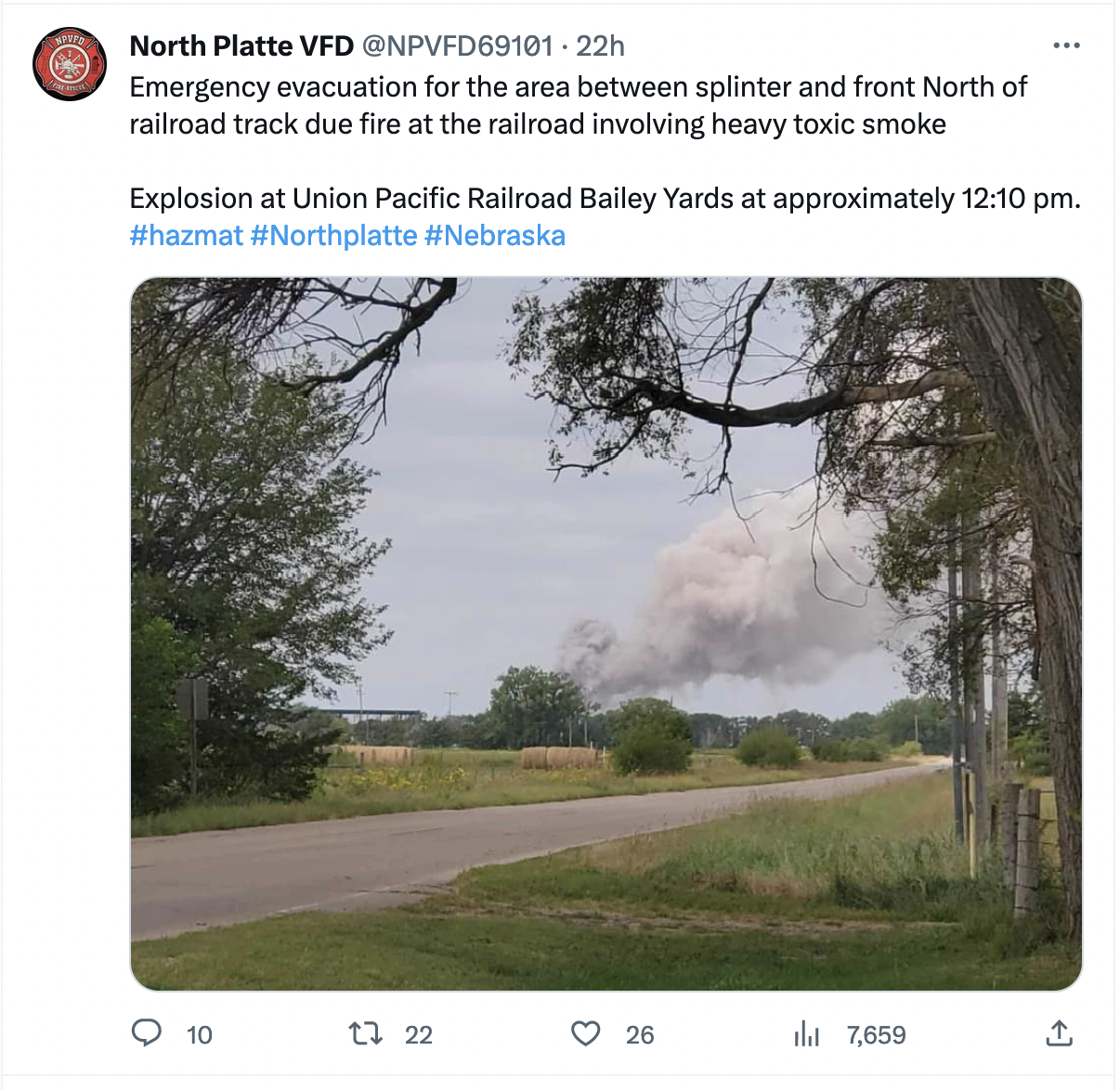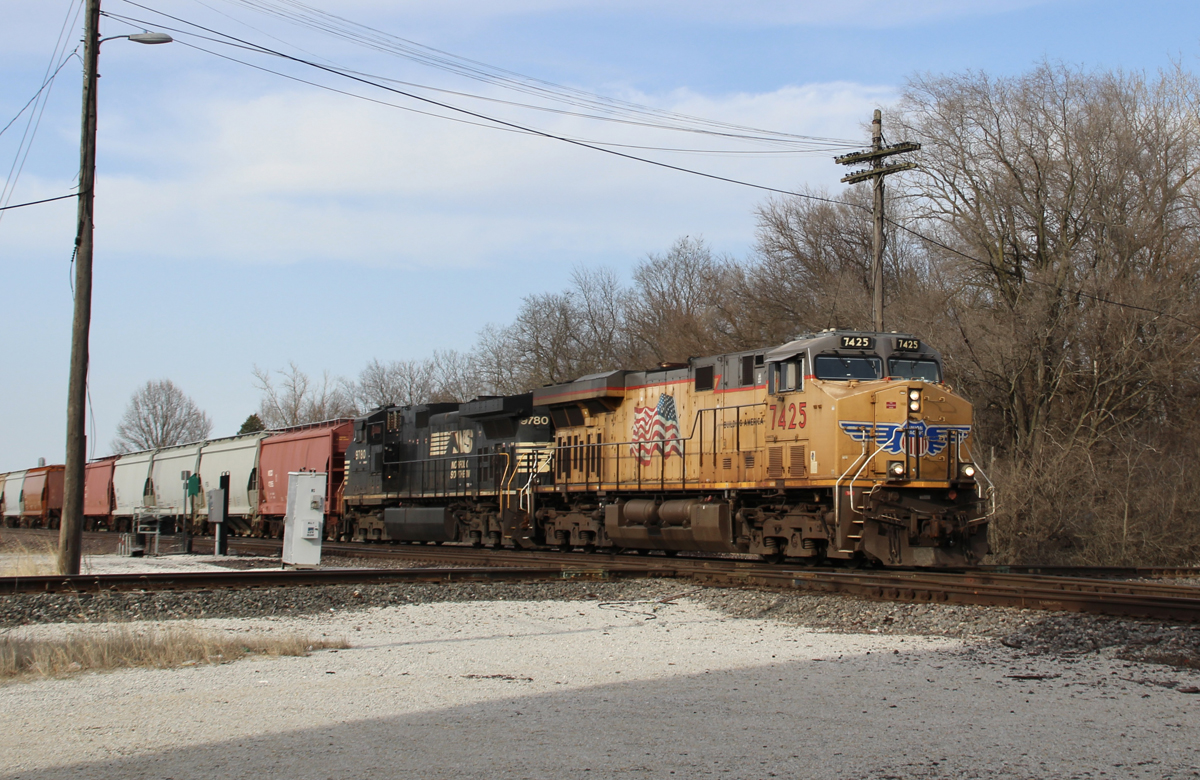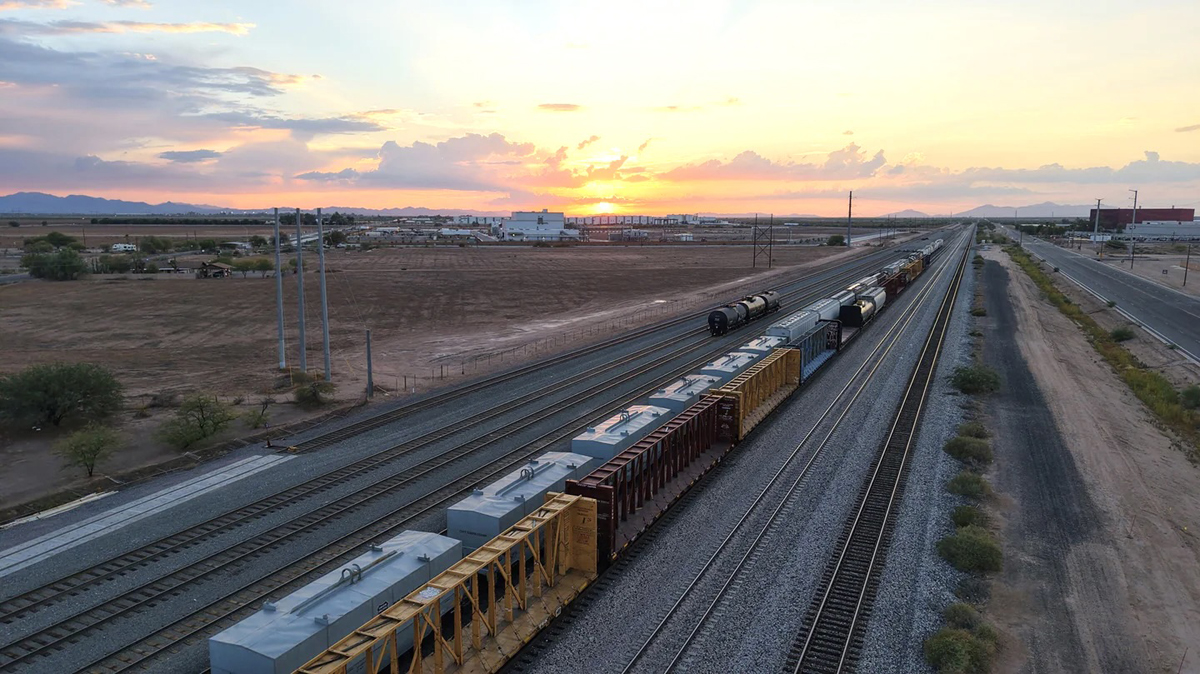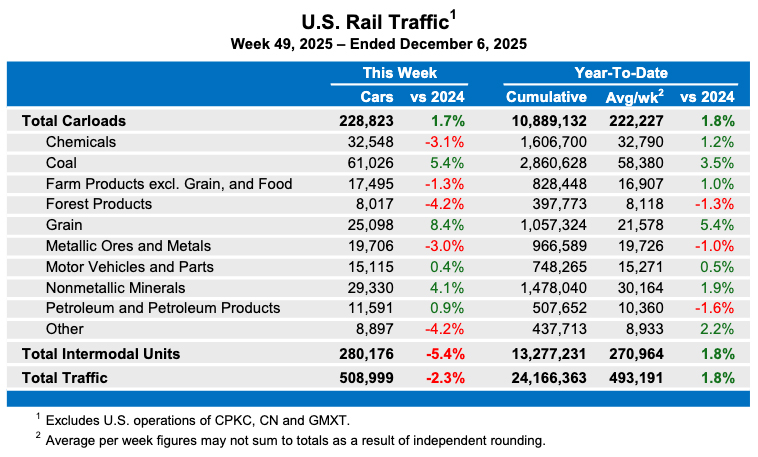
NORTH PLATTE, Neb.— An incident Thursday on the west end of Union Pacific’s Bailey Yard caused the evacuation of nearby residents, the Associated Press reports. Everyone within a 1-mile radius was evacuated and U.S. Highway 30 (between North Platte and Hershey) was shut down.
At approximately 12:10 p.m., an explosion of an intermodal container on a railcar began spreading fire to nearby railcars. The blast involved a chemical onboard called perchloric acid — a strong mineral acid used as an oxidizer — also known to be an explosion hazard. As seen on the right in the screenshot, there was a release of heavy, dark plumes of toxic smoke causing an immediate threat.
According to railroad spokeswoman Robynn Tysver, UP is not clear as to what caused the explosion. She confirmed that the car was stationary and no derailment took place.
No one was injured however. The North Platte Volunteer Fire Department confirmed the emergency evacuation was due to the smoke and posted photos of the area on X (formerly Twitter). Once the fire was extinguished by 5:30 p.m., the railroad was able to resume use of the whole yard.














Thanks Vincent, for addressing the real points. The previous FRA inspections had nothing to do with this incident. I’ve never know that FRA inspectors open containers to inspect loads.
The railroads I worked for had hazmat trained personnel.
The recent event occured as Union Pacific wants to know what safety defects federal inspectors say they found when conducting focused inspections last month at the Class I railroad’s Bailey Yard.
Dr. Güntürk Üstün
This recent event occurred due to a material spontaneously combusting in a container shipment offered by a customer. It had nothing to do with a safety defect and the cause of the explosion is still under investigation.
This chemical, perchloric acid, is used in many items used by consumers on a daily basis. It may be an oxidizer but it is also an ingredient in common household items. It was present in the container in its raw form in 55 gallon drums. UP participated in finding out what the hazardous element was and helped the North Plate Fire Department contact the manufacturer for fire fighting instructions.
I submitted the original AP article to Newswire. It said nothing about the explosive nature of perchloric acid as, ” also known to be an explosion hazard.” While it may be true, it was added after the fact. The railroad and NP Fire Department responded quickly and the main fire was out fairly quickly, with cleanup and hot spots being watched the rest of the afternoon. At about 5:15 pm the NP Fire Dept gave the go ahead for UP to resume operations as the initial response and hazardous material investigation for other elements was completed.
Local FRA inspectors were present and later an EPA official was on site, observing. The threat of concern was not the fire but the possibility of toxic smoke. That is why the NP Fire Department evacuated the area within one mile of the fire. The actual events which led to the explosion are still under investigation.
Ammonium and Aluminum Perchlorate are nasty sister elements. They are key elements in solid rocket fuel (as oxidzers) and are highly explosive by their very nature.
Isn’t this the same place the UP kicked the FRA inspectors out of last month? “Nothing to see here folks. Move Along.”
The Aqueous Perchloric Acid was being shipped in a shipping container holding
55-gallon drums. A guess would be that one of the drums leaked, contacting the floor of the container. If the container used a plywood floor, the Perchloric Acid would have started a fire. Once the Acid reach its critical temperature, BOOM.
A sister chemical Ammonium Perchlorate seriously damaged Henderson, NV back in 1988. Google the PEPCON disaster for some idea of the power of a perchlorate deflagration.
According to the AP, the National Transportation Safety Board has not started an investigation, but is monitoring the event. Federal Railroad Administration officials were at the yard monitoring UP’s “response to the explosion.”
Dr. Güntürk Üstün
It would be better if the USCSB (US Chemical Safety Board) did the investigation.
Respectfully, American Railroads need to hire people with hazwoper training.
Respectfully, How do you know they don’t have them?
You’ll have to excuse Mr Warner, he likes to bash Americans.
“According to railroad spokeswoman Robynn Tysver, UP is not clear as to what caused the explosion.”
“The blast involved a chemical onboard called perchloric acid — a strong mineral acid used as an oxidizer — also known to be an explosion hazard.”
Answered your own question, Perchloric acid!
Not knowing what concentration the Perchloric acid was or if anything else that was in the container could have caused the explosion. You are jumping to conclusions not supported by evidence yet. Just because something is known to be an explosion hazards doesn’t mean that it did explode. What else was in the container that could have exploded?
No doubt Ms. Tysver was referring to the source of ignition.